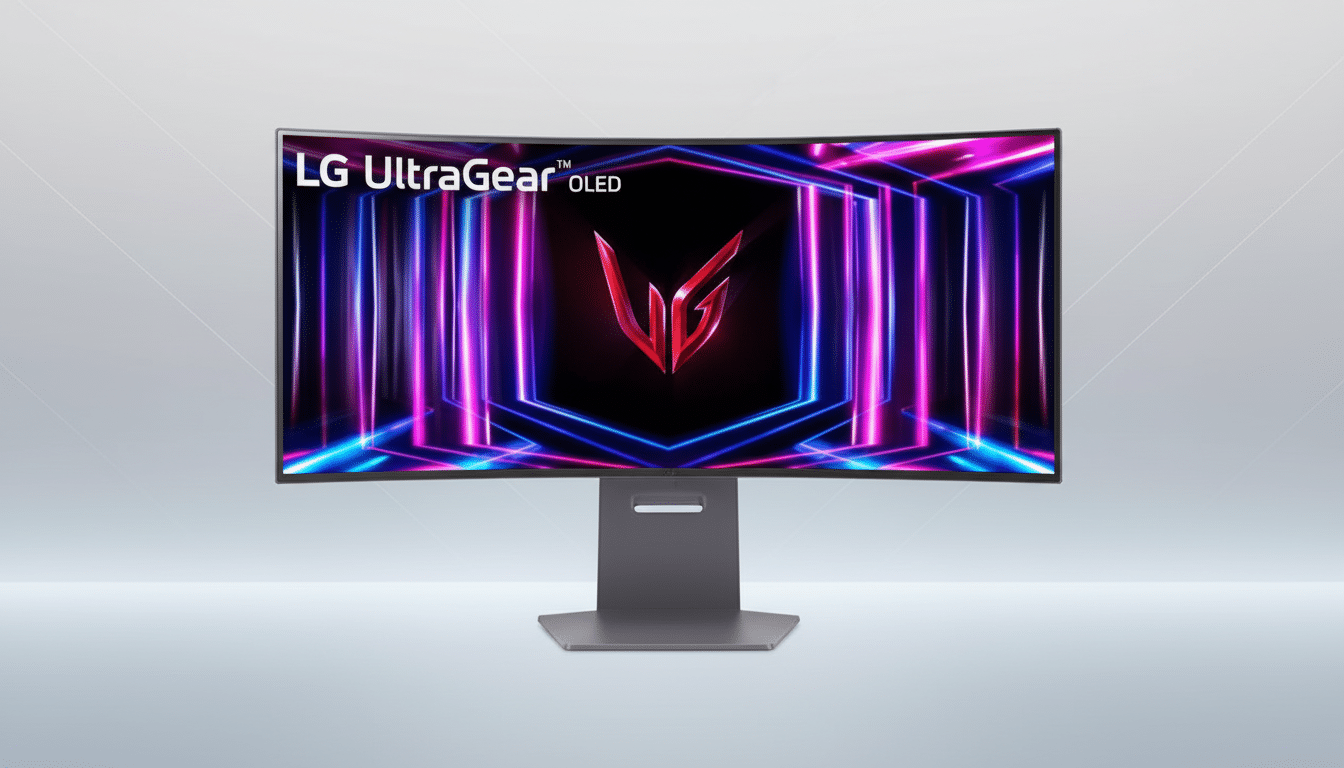The 34-inch LG UltraGear OLED curved gaming monitor is now just $696.99 on Amazon, which is a 50% discount from its original list price of $1,399.99.
For an ultrawide OLED designed for speed and immersion, even just seeing it below $700 is a headline moment at this point in the PC gamers’ upgrade path before the holiday season shift kicks into gear.

What Makes This 50% Off Discount Stand Out
Per-pixel lighting, near-infinite contrast, and inky blacks are among the features that have placed OLED panels atop high-end gaming displays, where IPS and VA panels can’t go.
This is a rare deep discount on a current-gen, 240Hz ultrawide; street pricing on similar models has generally been hanging out north of $900 for most of the year. If you have been waiting for a significant price-to-performance leap instead, this is the sort of drop that shifts the math.
Price is a draw only if the hardware can keep up. Here, it does. LG’s 34-inch UltraGear OLED is serious, playing with a 21:9 WQHD (3440×1440) resolution, a steep curve for immersive wraparound action, and esports-grade responsiveness. It’s a monitor that does both cinematic single-player and twitchy competitive shooters, in other words, without feeling like it compromises on either.
Specs That Matter For Achieving Competitive And Immersive Play
Highlighted gaming specs are a 240Hz refresh and ultra-quick 0.03ms gray-to-gray response time—figures intended to reduce motion blur and ghosting during fast camera pans or flick shots.
The panel is also VRR-capable via both Nvidia G-Sync Compatible and AMD FreeSync Premium, which minimize tearing across a range of frame rates to smooth out the gaming image.
34-inch 800R-class curvature and a 21:9 aspect ratio bring the corners of every scene right in front of you, with no detail escaping your eyes in supported games. Games such as Cyberpunk 2077, Forza Horizon 5, and Baldur’s Gate 3 render gorgeously at an ultrawide resolution, and the additional horizontal real estate suits a timeline, chat app, and web browser snuggled together in ways that don’t feel cramped when you’re not gaming.

OLED’s individual-pixel illumination delivers stellar contrast and true blacks that make HDR scenes pop in ways edge-lit panels simply can’t. Independent testing organizations such as RTINGS and TFT Central consistently point out OLED’s unmatched motion clarity and its low latency at 240Hz, both of which can make a difference in fast shooters and racing games. That being said, there are some 480–500Hz LCDs out there, but they’d likely be wasted on most unless you have elite reflexes and are tweaked to the extreme (you start hitting hard diminishing returns).
Ultrawide Fit and Real-World Setup Considerations
Curved ultrawides require a little more desk depth; you should plan on sitting an arm’s length away to get the curve of the screen lined up properly and prevent neck strain. The aggressive curve deliberately pulls content toward your peripheral vision, which promotes less head movement in the long run so you can concentrate on winning more at life. And if you also use the display for work, 34-inch 21:9 is great for spreadsheets or editing timelines (or three apps at once).
For connectivity, having multiple video inputs — usually HDMI (for your PC) and DisplayPort (because not all PCs include HDMI) — should allow you to easily switch between a gaming PC and secondary devices. Console gamers should keep in mind that the majority of consoles are 16:9 output and their capped refresh rate is lower; ultrawide is most valuable within the broader PC ecosystem where game compatibility is far-reaching and VRR is more developed.
Burn-in and panel care tips for long-term OLED use
Modern OLED gaming monitors come equipped with panel care features such as pixel shifting, logo luminance adjustment, and periodic compensation cycles to counteract image retention. It is worth noting (from bodies like the International Display Measurement Standard) that OLED life varies mainly by usage. Look out for static HUDs that spend hours in standby, turn on all the built-in protection, and vary content; for standard mixed usage, burn-in is rare.
Price context and buying advice for this OLED deal
This LG, at $696.99, sneaks under most of the IPS ultrawides that don’t have its contrast or response time, putting it directly against the best-in-class OLED models from Alienware and MSI for a steep discount. Premium gaming monitors have seen fewer deep price cuts than mainstream screens, according to market trackers such as IDC, and that makes a straight 50% drop on a performance OLED all the more noteworthy.
If you want the best balance of speed, contrast, and cinematic scale for PC, this deal is a no-brainer recommendation. Focus on a capable GPU to push 3440×1440 at high frame rates, leave VRR on, and you’ll get all the fluidity this panel was designed to provide. As ever, prices and availability can fluctuate quickly, but at half off, this UltraGear OLED is the sort of upgrade that turns a setup on its head overnight.

